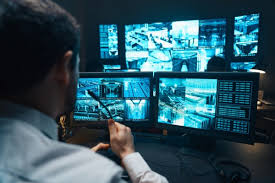The movement of goods and people across borders has become a cornerstone of international trade and travel. However, this increased mobility brings with it challenges in security, necessitating the need for advanced technologies in customs operations. Traditional methods of inspection, while valuable, often fall short in their ability to efficiently and effectively detect contraband, weapons, and other illicit items. This is where border crossing X-ray machines come into play, revolutionizing the way customs authorities manage security and efficiency at international borders.
Enhancing Detection Capabilities
One of the primary advantages of border crossing X-ray machines is their ability to provide detailed imaging of cargo and vehicles. Unlike physical inspections that can be time-consuming and labor-intensive, X-ray technology allows customs officials to quickly scan containers and vehicles, revealing hidden items without the need for invasive searches. This capability is crucial in identifying potential threats, such as drugs, weapons, or stolen goods, while minimizing the disruption to legitimate trade and travel.
The advanced imaging technology used in these machines can differentiate between various materials, providing a clearer picture of what is contained within cargo shipments. This helps customs authorities make informed decisions on which items require further examination and which can be cleared for passage. As a result, the potential for human error is reduced, and the accuracy of threat detection is significantly enhanced.
Streamlining Customs Processes
Efficiency is another critical aspect of modern customs operations, and border crossing X-ray machines play a vital role in streamlining processes. The traditional inspection methods often lead to long wait times at borders, affecting both commercial traffic and travelers. With the implementation of X-ray machines, customs officials can significantly reduce these wait times, allowing for faster processing of goods and individuals.
For instance, high-throughput X-ray systems can scan multiple vehicles or containers simultaneously, drastically increasing the number of inspections conducted per hour. This is particularly beneficial during peak travel seasons or when there is a surge in trade activity. By speeding up the inspection process, customs authorities can enhance the overall flow of goods and people across borders, contributing to economic efficiency and reducing congestion at crossings.
Integration with Other Technologies
The effectiveness of border crossing X-ray machines is further amplified when integrated with other technologies. For example, automated license plate recognition (ALPR) systems can work in tandem with X-ray scanners to identify and track vehicles entering and exiting border crossings. This integration allows customs officials to maintain comprehensive records of inspections, enhancing their ability to analyze data and identify patterns related to illicit activity.
Moreover, the use of advanced data analytics can provide insights into trends and behaviors that might indicate potential security threats. By analyzing inspection data collected from X-ray machines, customs authorities can better allocate their resources, focusing on high-risk areas or specific types of cargo that warrant closer scrutiny. This proactive approach to security not only enhances safety but also contributes to more efficient customs operations overall.
Training and Workforce Adaptation
While technology plays a vital role in enhancing security and efficiency, the human element remains crucial in customs operations. Customs officials must be adequately trained to interpret the images produced by border crossing X-ray machines and make informed decisions based on what they see. Continuous training programs are essential to ensure that personnel remain proficient in using this technology and can adapt to any updates or advancements in X-ray systems.
Additionally, fostering a culture of collaboration between technology and personnel can lead to improved outcomes. While X-ray machines can provide valuable insights, human expertise is still necessary to contextualize the information and make final assessments. By empowering customs officials with the right training and tools, authorities can create a more effective and responsive customs environment.
Addressing Privacy Concerns
As with any technology that involves scanning and monitoring, privacy concerns can arise. It is essential that customs authorities implement stringent protocols to ensure that the use of border crossing X-ray machines complies with privacy laws and regulations. Transparency in how data is collected, used, and safeguarded is crucial in maintaining public trust.
Customs authorities must also communicate effectively with the public about the benefits of these technologies. Demonstrating that the primary goal of using X-ray machines is to enhance security and efficiency, rather than infringing on individual rights, can help alleviate concerns. Establishing clear guidelines and oversight mechanisms will further reassure the public that their rights are being respected.
Future Innovations and Trends
Looking ahead, the role of border crossing X-ray machines in customs operations is likely to continue evolving. As technology advances, we can expect to see even more sophisticated imaging techniques, potentially incorporating artificial intelligence and machine learning to improve detection capabilities. These innovations could lead to even greater efficiency in processing times and a higher rate of identifying potential threats.
Additionally, the integration of biometric screening technologies alongside X-ray machines could further streamline border crossing processes. By combining multiple layers of security and technology, customs authorities can create a comprehensive approach that effectively addresses the complexities of modern border security.
In conclusion, border crossing X-ray machines are integral to enhancing security and efficiency in modern customs operations. By providing advanced detection capabilities, streamlining processes, and integrating with other technologies, these machines significantly improve the effectiveness of border inspections. As the landscape of international trade and travel continues to evolve, the ongoing development and implementation of such technologies will be crucial in ensuring that customs authorities can meet the challenges of a dynamic and interconnected world.


Search Posts
Popular Posts
Quick Links
Seven Seven Tech provides advanced technology and smart solutions, empowering businesses with innovation, efficiency, and digital tools. Enhancing growth with cutting-edge advancements, transforming industries with seamless integration, automation, and intelligence. #sevenseventech
Copyright © 2024 | All Right Reserved | Seven Seven Tech
